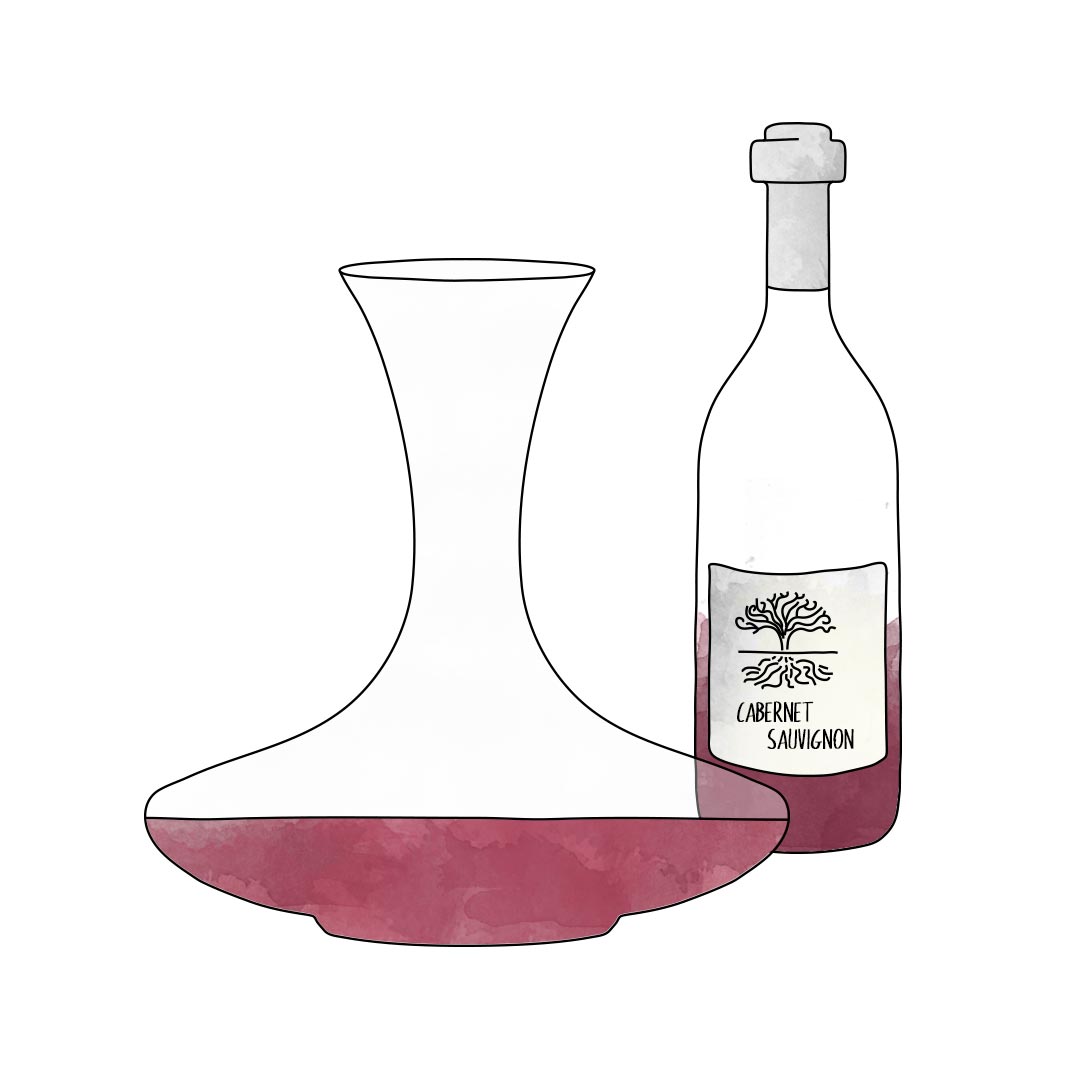1. Removal of sediments
Decanting removes the wine of its sediments, also called “dregs”. Wines meant for ageing will throw sediment such as particles made from tannins, tartrates, dead yeast cells and other compounds. As years go by these particles interact with one another and grow bigger, settling at the bottom of the bottle. Although absolutely inoffensive, they don’t look pretty on the walls of your glass and can add a bitter flavour to your sip.
To decant a wine like this you need to plan ahead. If the bottle is resting horizontally in the rack, place it upright for 48 hours in a quiet room to allow the sediment to reach the bottom. When pouring the wine into the decanter do it slowly and place a source of light such as a candle behind the neck of the bottle so you can see through. You should stop pouring the moment you see the sediment gathering at the neck. There will still be some wine leftover in the bottle but a worthy price to pay to get rid of those ugly dregs.
2. Aeration
This is when decanting your wine gets trickier. The purpose of aeration is to let the wine breathe, and with that I mean, to leave the wine in contact with oxygen. We want to allow as much wine to be in contact with the air as possible, which is why a good wine decanter has a wide base. But how do you know when a wine needs aeration? Well, the truth is not even wine experts can agree on this. At the end of the day, it’s a matter of personal taste.
The science behind decanting is, fortunately, easy to make sense of. When oxygen interacts with the compounds found in wine, change, and become softer. If there are some volatile compounds which give an unpleasant smell, these should evaporate too.
As a rule of thumb, young red wines, especially those that are full-bodied, can benefit from aeration in a decanter to soften aggressive tannins. Wines that are acidic or high in alcohol can mellow too. Natural wines, those with little intervention during the winemaking process and which have little or no added sulphur, can smell funky, so decanting will help dissipate these aromas.

In conclusion
In my opinion, if you’re in doubt, decant. There’s no harm in doing so unless it’s a bottle of old and fragile wine. The time a wine must be decanted for can’t be generalised and can only be guessed. Before decanting taste the wine from the bottle and if you’re happy, don’t decant. If you think the wine is not at its best, decant for 30 minutes and taste again. If you’re still unhappy, wait for another 30 minutes. Some wines might need a longer time to breathe, but tasting its evolution over time is part of the magic of drinking wine, so enjoy it!
Wine served in a decanter might be easier and safer to pour from so your tablecloth will surely appreciate it. If you’re throwing a dinner party with friends I suggest you also leave the empty bottle on the table so that everyone can see and take note of what they’re drinking.
Cheers!






